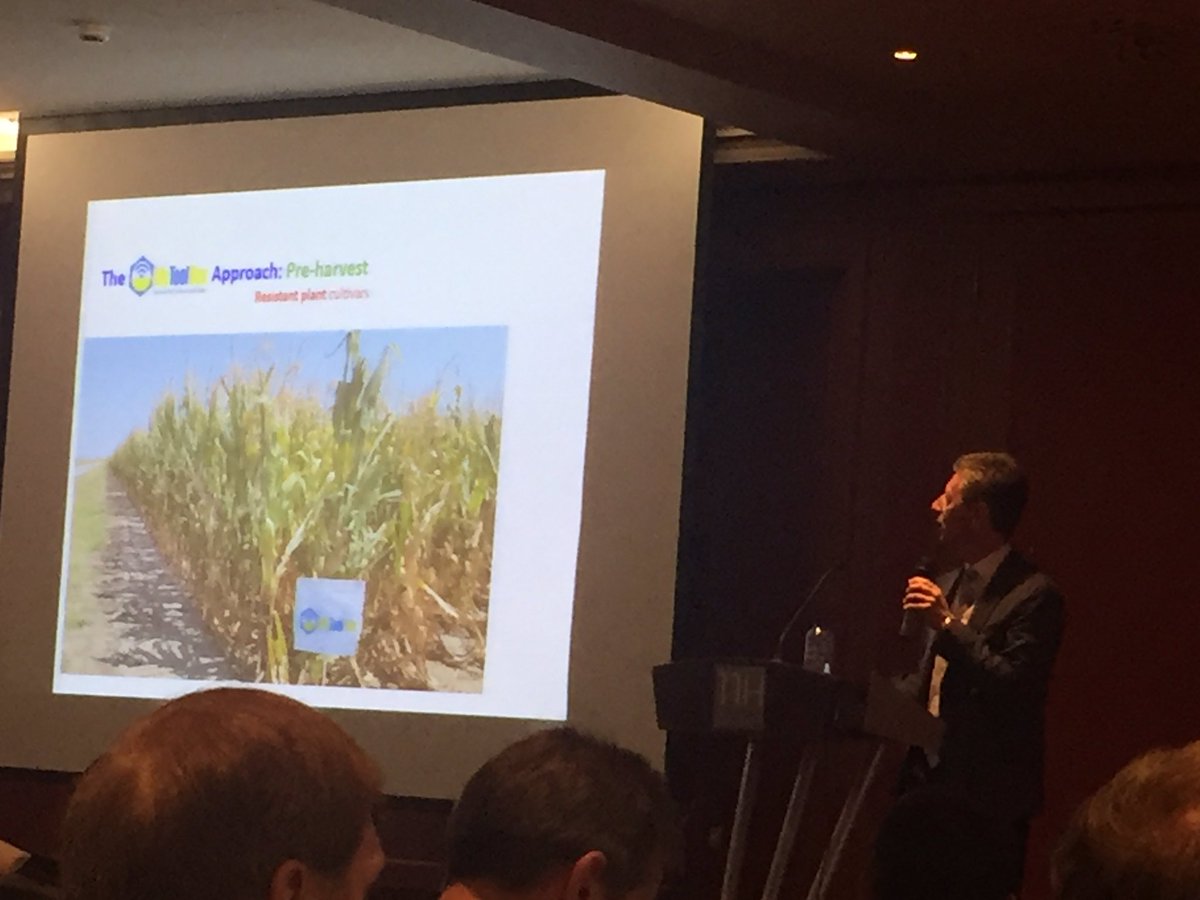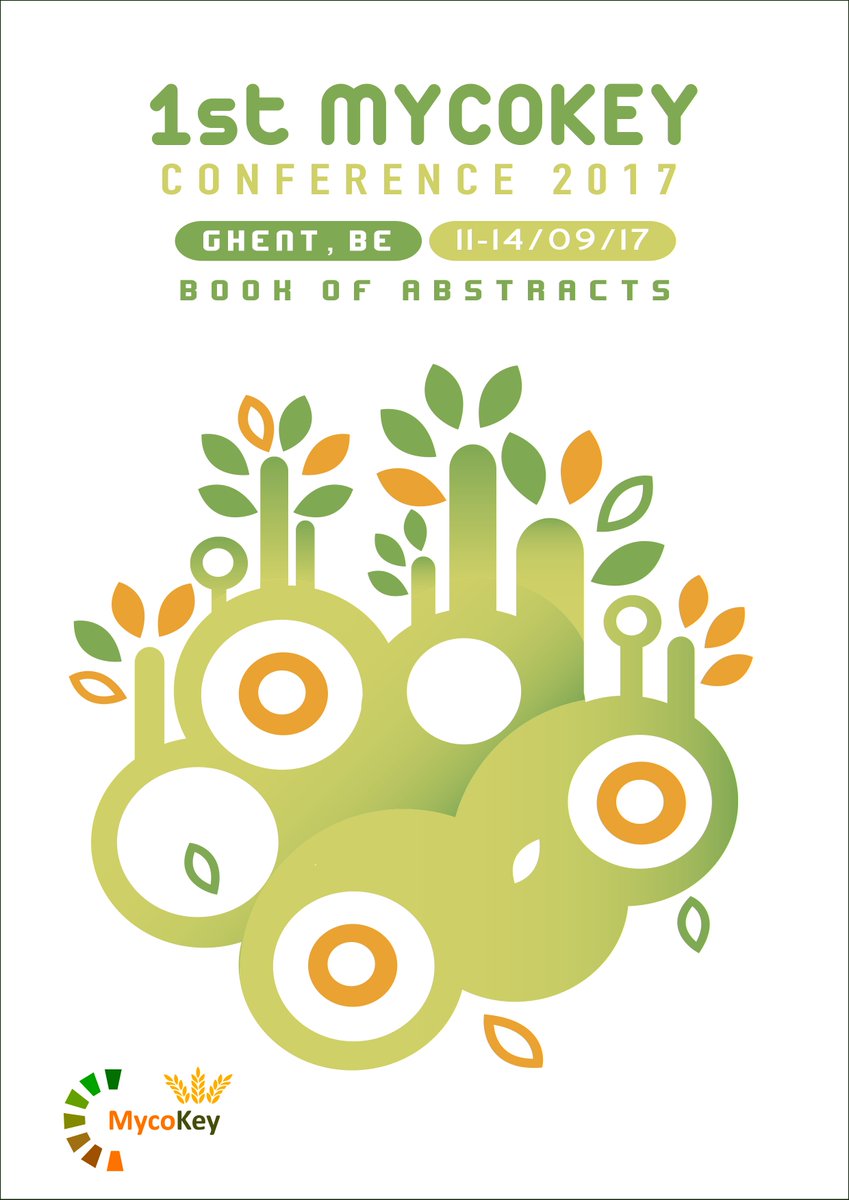12-14 September 2017. Ghent, Belgium. 1st MYCOKEY International Conference. Global Mycotoxin Reduction in the Food and Feed Chain
See announcement
MYCOKEY aims to deliver by 2019 the first integrated ICT tool to address mycotoxin contamination along the food and feed chain. MycoKey integrates innovative key actions into an user friendly and cheap application, able to provide real-time information and suggestions for mycotoxin management to several stakeholders.
Thanks to the participation of several Chinese partners, it strengthens the global knowledge on mycotoxins as well as the effective cooperation with China. The conference isbe in collaboration with MyToolBox.
The congress was open for all contributions related to the following general topics in mycotoxin research:
 Extract of the programme:
Extract of the programme:
12 September.
13 September.
See announcement
 |
| Frans Verstraete: "We need to understand the incentives to have good agricultural practices" |
MYCOKEY aims to deliver by 2019 the first integrated ICT tool to address mycotoxin contamination along the food and feed chain. MycoKey integrates innovative key actions into an user friendly and cheap application, able to provide real-time information and suggestions for mycotoxin management to several stakeholders.
Thanks to the participation of several Chinese partners, it strengthens the global knowledge on mycotoxins as well as the effective cooperation with China. The conference isbe in collaboration with MyToolBox.
The congress was open for all contributions related to the following general topics in mycotoxin research:
 |
| Prof. Krska |
- Global impact of mycotoxins
- Biodiversity and toxigenic fungi monitoring
- Mycotoxin analytical challenges
- Prevention
- Animal health and toxicology
- Impact of climate change
- Challenges for developing countries
- Remediation and intervention
- Human health and toxicology
- Modelling and ICT solutions
 Extract of the programme:
Extract of the programme:12 September.
- An integrated toolbox for mycotoxins management for safer food and feed: the Mytoolbox approach R. Krska (coordinator Mytoolbox, IFA Tulln BOKU, Austria)
- Climate change and globalisation: a challenge for EU policy on mycotoxins in feed and food F. Verstraete (EU DG SANCO, Belgium) (see video extract below)
13 September.
- First year experience with large-scale application of an Aspergillus
flavus biocontrol agent for aflatoxin prevention in Italian maize
P. Battiliani (Universita Cattolica del Sacro Cuore, Italy)
Registered biopesticide products for aflatoxin prevention are commercially available in the U.S. and Africa and are in the process of becoming registered in Italy. The A. flavus genotype that is the active ingredient of the Italian biocontrol product was selected from A. flavus genotypes native to Italy that were collected starting in 2003. The active ingredient has natural genetic defects that eliminate abilities to produce both aflatoxins and cyclopiazonic acid. This genotype is also very competitive against aflatoxin-producing genotypes. In 2012, field trials intended to assess efficacy on maize during the natural contamination process, resulted in statistically significant reductions in aflatoxins of approximately 90%. This supported the intent to further develop this biopesticide. (...) In summary, AF-X1 was very effective at preventing unacceptable levels of aflatoxins in Italian maize. The milk, cheese, and farming industries hope these very positive results will facilitate the registration process and result in farmers rapidly obtaining unlimited access to this tool useful for improving food and feed safety in the maize value chain. - Effectiveness of agrochemicals in reducing Fusarium verticilloides (sacc.) nirenberg infection and contamination of fumonisins in maize of low land agro-ecosystems in Tanzania R. Madege (Sokoine University of Agriculture, Tanzania)
Fusarium verticillioides is the most common Fusarium species associated with maize ear rot in Tanzania. In a two-year trial, we investigated the effectiveness of pesticides and fertilizer in reducing occurrence of Fusarium verticillioides and its mycotoxins in maize of lowland agro ecosystem of Tanzania. - Effect of feed-borne Fusarium mycotoxins on the gut microbiome composition in broiler chickens and in pigs G. Antonissen (Ghent University, Belgium)
- Post-harvest interventions decrease infants’ dietary exposure to aflatoxins and fumonisins in Tanzania: a cluster-randomized controlled trial A. Kamala (Ghent University ; Directorate of Food Safety, Tanzania)
- Effect of groundnut drying methods on drying rate and aflatoxin contamination M. Chimbaza (Luanar, Malawi)
- Fusarium (modified) mycotoxins in Nigerian sorghum-based beer: natural occurrence and influence of traditional processing methods C. Chilaka (Ghent University, Belgium ; MOUAU University, Nigeria)


- KEYNOTE: Patrick Njobeh (University of Johannesburg, South-Africa) The socio-economic impact of mycotoxin contamination in Africa
Foods such as spices and herbs, which are used throughout food processing are often predisposed to toxigenic fungi. Exposure to these contaminants presents a health hazard to humans, thus, it is imperative to monitor highly-consumed spices for fungal growth with subsequent mycotoxin analysis.
- I. Adekoya (University of Johannesburg, South-Africa) Multi-mycotoxin contamination in fermented locust beans (Parkia Biglobosa) and the perception of mycotoxin contamination in Nigerian and South African markets
To date, there is little or no information on multiple mycotoxin occurrences in fermented locust beans. In this study, the knowledge of fermented food vendors and processors on fungi and mycotoxin and the occurrence of mycotoxins in fermented locust beans consumed in Nigeria and South Africa were assessed.
- Atanda Olusegun (DBS, Nigeria) Risk assessment of mycotoxins associated with consumption of stored maize grains by infants and children in Nigeria
Maize is a staple cereal that is used as complimentary or weaning food particularly among infants and young children (IYC) in Nigeria. In this study we determined the Probable Daily Intake (PDI) and characterized the risk assessment of infants and young children to some naturally occurring mycotoxins in stored maize grains from five agro-ecological zones of Nigeria.
- Ndemera M. + Nyanga Loveness K. (Institute of Food Nutrition and Family Sciences, University of Zimbabwe) Agronomic Practices and Mycotoxin Contamination in Maize: A Case Study of Subsistence Farming Households in Manicaland and Mashonaland West Provinces of Zimbabwe
To fully elucidate and understand maize agronomic practices by Zimbabwean subsistence farming populations an investigative field survey was conducted in the selected provinces of Mashonaland West and Manicaland. - L. Matumba (Luanar, Malawi) Current trends in sample size in mycotoxin analysis in grains: are we measuring accurately?
Due to heterogeneous distribution of mycotoxins in food and feed, reliability of analytical measurement is greatly affected by sampling. High concentrations of mycotoxins have been found in individual kernels of corn, peanuts, and cottonseed and tree nuts thus heterogeneity of mycotoxins vary strongly amount of kernels per gram. It is well established that variance of estimated concentrations is inversely proportional to sample size. However, recent years have witnessed a revolution in sample size reduction with most laboratory increasingly grinding less than 1 kg of corn or peanuts, and extracting a sample than 10 g of dry grind. The present paper critically reviews the current trends in the sample sizes, sample grinders used, extraction vessels, etcetera over a period of two decades using selected mycotoxin journals and further compares these parameters against national and regional guidelines.
 |
| Dr.Michael Sulyok #BOKU giving a presentation about the analysis of #mycotoxins in feed |




No comments:
Post a Comment